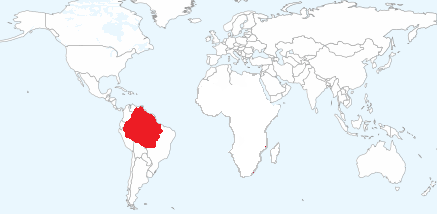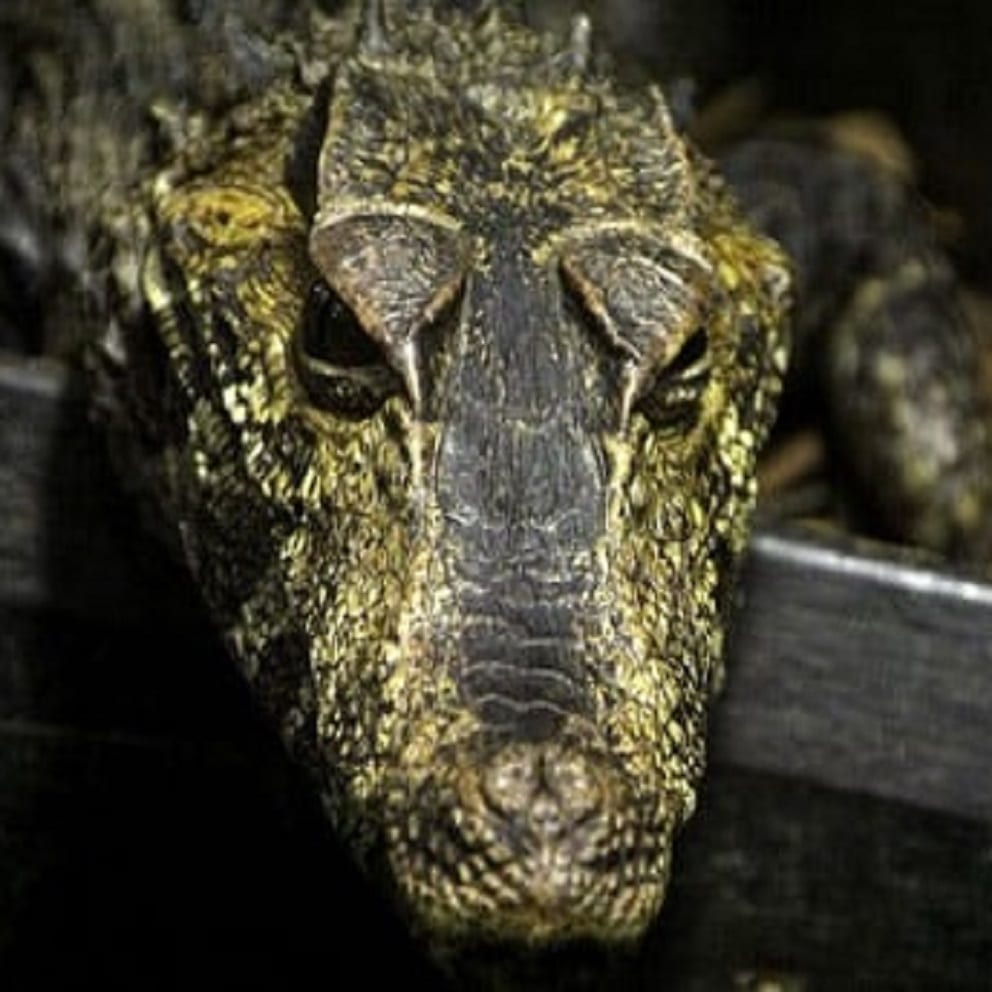Schneider’s dwarf caiman is classified as Lower Risk/least concern on the IUCN Red List of Threatened Species.
It is listed on CITES Appendix II.
Red List Category & Criteria: Lower Risk/least concern ver 2.3
Year Published: 1996
Date Assessed: 1996-08-01

Countries: Bolivia; Brazil; Colombia; Ecuador; French Guiana; Guyana; Peru; Suriname; Venezuela

The smooth-fronted caiman is native to the Amazon and Orinoco Basins in South America and is found in Bolivia, Brazil, Colombia, Ecuador, French Guiana, Guyana, Peru, Suriname, and Venezuela. It inhabits small streams in forested areas where in some cases; the water may be insufficiently deep for it to completely submerge itself. It is seldom seen in open areas and does not usually bask in the sun, even in captivity. This species can also be found in relatively high altitudes exceeding 1000m above sea level in small stream habitats.
It has been shown that the diet of caimans in the wild is dependant upon their habitat preferences. They are reported to forage from burrows at night, often near water, but also in the surrounding forest within their territories – which can range for several kilometres.
Juveniles tend to eat a greater proportion of fish than other caiman species. Mature adults include a larger proportion of terrestrial vertebrates in their diet, such as snakes and mammals.
Subsistence hunting has been of sufficiently low intensity to avoid damaging populations. Major present and future threats include habitat destruction, and pollution associated with gold mining activities. Fortunately, this species is not extensively hunted because its skin contains many bony scutes, which make it of little use for leather.
Over 1,000,000 individuals are estimated to remain in the wild, and the species is rated by the IUCN Red List of Threatened Species as being of “Least Concern”.
Est. wild population: More than 1,000,000
Main conservation threats: Habitat destruction and pollution



